Record Shake: Magnitude 4,4! CAMPI FLEGREI, THE MOST DANGEROUS SUPERVOLCANO IN EUROPE TERRORS ITALY. In the Dante’s HELL GATES 647 Earthquakes in a Few Days
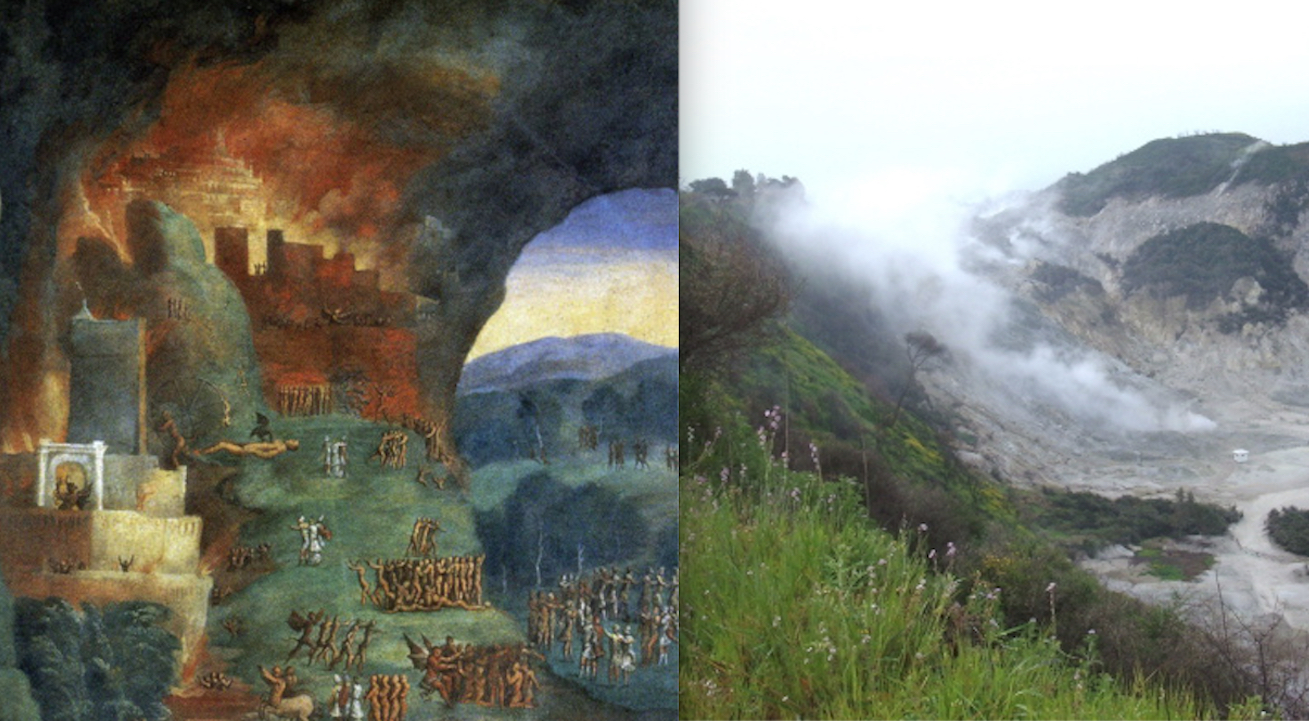
In the cover image the work of Niccolò dell’Abate “Enea descends into Avernus” which refers to the homonymous lake of the Campi Flegrei after which there would be the door to the afterlife according to Virgil’s Aeneid and Dante’s Divine Comedy. Next to it the solfatara of Pozzuoli
By Fabio Giuseppe Carlo Carisio
All linked articles in Italian can be read in English or in other languages thanks the machine translation available clicking on the flags
UPDATE MARCH 13, 2025
Record earthquake of magnitude 4.4 in the Naples area
A strong earthquake hit the Campi Flegrei area at 00:25. Residents throughout the Naples area felt it distinctly and many of them took to the streets.
According to the INGV (National Institute of Geophysics and Volcanology), the magnitude of the shock was 4.4 with the epicenter between Bagnoli and Pozzuoli. The depth is calculated at 2 km. The USGS, the American center that monitors earthquakes around the world, speaks of a magnitude of 4.2 and places the depth of the shock at 10 km, with the epicenter 3 km from Bacoli.
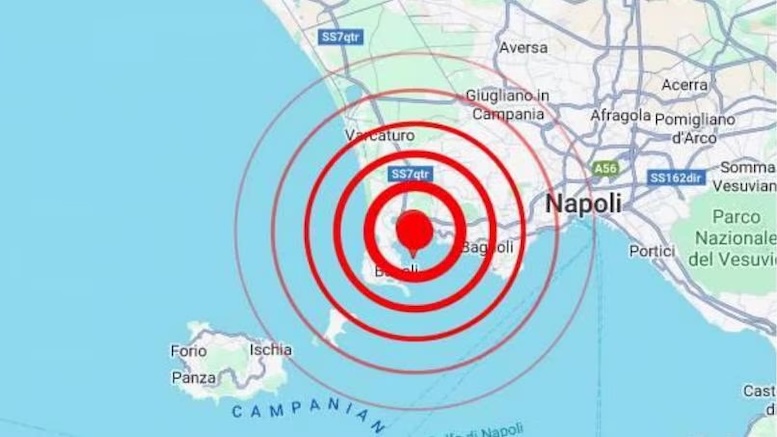
In Pozzuoli, the Fire Brigade intervened due to the collapse of a floor and rescued one person. Checks are underway to verify the presence of other residents in the same house. Yesterday morning at dawn the Vesuvius Observatory had communicated that starting from 06:25 a seismic swarm was underway in the Campi Flegrei area.
Since September 2023, no tremors greater than magnitude 4 had been recorded. At that time, an unknown seismic swarm had been recorded (read below) with a telluric acme of 4.2
read more – Woman Extracted Alive from Collapsing Ceiling
POSTED ON FEBRUARY, 19, 2025
647 Shakes but for the Institutions it is only a “Psychological Emergency”
Southern Italy is experiencing great anxiety due to the exceptional seismic activity around the area of the supervolcano of Campi Flegrei, one of the largest calderas in the world that in recent years has shown signs of disturbing activity.
It is located in the Gulf of Naples and extends underground for kilometers affecting a vast and populous area of Campania, between the municipalities of Bacoli and Pozzuoli..
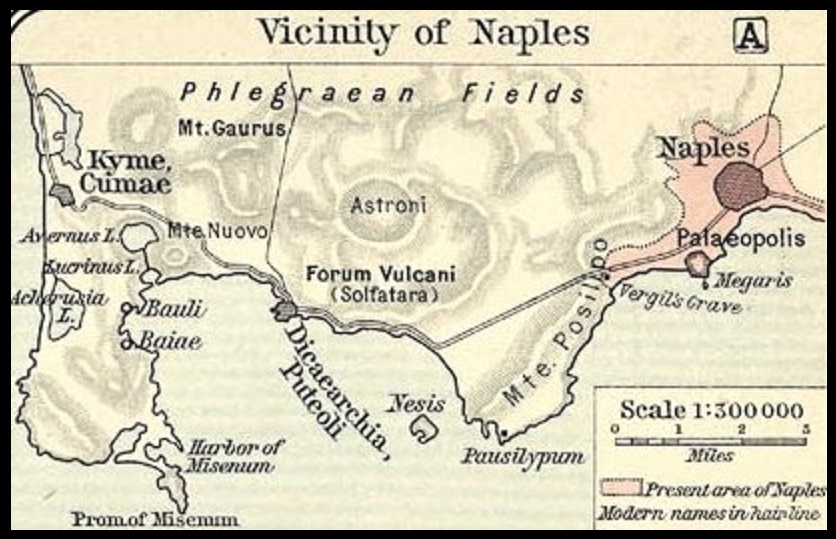
Since February 15, 647 tremors have been recorded, including at least 5 earthquakes with a magnitude greater than 3 and two with an intensity of 3.9. Schools have been closed as a precaution in the municipality of Pozzuoli where there have also been at least 500 displaced people from their homes welcomed in temporary reception centers.
There has also been strong controversy between local administrators and national institutions who have tried to minimize the emergency by calling it “psychological”.
The Mysterious Bradyseism in the Hell Gates
This frequency of seismic swarms represents an absolute record since 2017, when the super caldera was reported worldwide as one of the most critical and dangerous points on earth for bradyseism,
a phenomenon consisting of a periodic lowering or raising of the ground level, relatively slow on the human time scale but very fast compared to geological time.
It is an uninterrupted seismic swarm that began at 6:30 on September 26 in the volcanic area of Campi Flegrei in Naples and defined as “a new and unknown thing” by an alarmed expert from the National Institute of Geophysics and Volcanology.
It represents an apocalyptic nightmare also for a historical-mythological reason …
Inside the concave basin of the “supercaldera” of the Campi Flegrei, the volcanic lake of Avernus was created where, according to Virgil, there is the door to the Underworld (called Hades by the Latins but also Avernus in reference to the citation of the Aeneid by the Latin poet) and where the dark forest would arise where the journey of the Divine Comedy by Dante Alighieri begins…
Before me there were no created things
except eternal, and I endure eternally.
Abandon all hope, ye who enter here.
The Geologist: “A New and Unknown Phenomen”
“Soil deformation and seismicity go hand in hand” and even the most recent earthquakes are linked “to the phenomenon of bradyseism, like all the earthquakes of the Campi Flegrei”
, in the context of a “crisis that began in 2005”, observed the expert Francesca Bianco, director of the Volcanoes department of the National Institute of Geophysics and Volcanology, when the tremendous shock of magnitude 4.2 was recorded on 29 September 2023.
Since then, over the course of 18 years, “there has been a ground uplift that has reached a maximum of just over 113 centimetres in the Rione Terra area. From here, in all directions the deformation decreases significantly”.
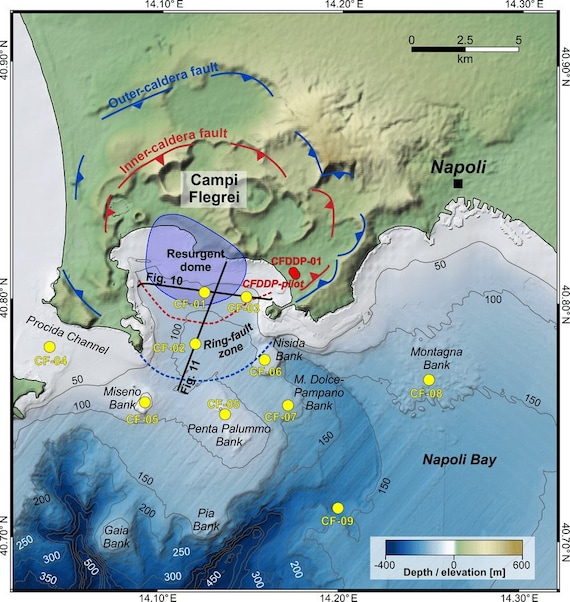
Giuseppe Mastrolorenzo, of the National Institute of Geophysics and Volcanology, this is a new phenomenon to analyse: “We must not compare the bradyseismic phases of the past, of the 1970s and 1980s, with the current ones so confidently. This is a completely different bradyseism in terms of dynamics. While in the previous phases the uplift was much faster, in this case there is a long bradyseismic phase, with a slow uplift of the ground, but the seismicity has reached the same levels as in the previous phases”.
“The mistake that is made is to say ‘we have reached levels already recorded in the past’, but this is not true because in this phase everything is increasing compared to the levels reached in the past and the earthquakes have reached equal or even greater levels compared to the 80s. For this reason it cannot be compared so closely with the previous ones. It is something new and unknown, just as bradyseism was unknown in the 80s” he added.
«Due to their risk and volcanic danger, as well as their size, several volcanic centers around the world are commonly defined as supervolcanoes, even though they have not produced eruptions of magnitude VEI 8 in the past. This is the case, for example, of the Campi Flegrei, a large volcanic field that has been active for over 80,000 years, which occupies an area of about 200 km2 in the Gulf of Pozzuoli, northwest of the city of Naples, and whose most violent eruption, that of the Campanian ignimbrite that occurred about 39,000 years ago, falls within step 7 of the VEI scale» wrote Domenico Ravidà in an investigation into world supervolcanoes.
Dr. Ravidà is a geologist and sedimentologist with a degree in Geological Sciences from FAU Erlangen-Nürnberg in Germany and is currently a researcher at the Georg-August-Universität in Göttingen who published a detailed investigation on the subject on Groppo recalling that the Campi Flegrei are one of the 6 largest and most dangerous Calderas in the entire world.
«Given the impact of this eruption on a global scale, and in particular the decrease of 3-4 degrees in temperatures in the northern hemisphere, due to the release of large volumes of particles into the atmosphere, the Campi Flegrei caldera has received (journalistically speaking) the attribute of the most dangerous supervolcano in Europe. The second most violent eruption of the Campi Flegrei is instead that of the Neapolitan Yellow Tuff, which occurred about 15,000 years ago, and is classified VEI 6».
The Alert by University College London Expert
“Taking into account that the Campi Flegrei are one of the most dangerous volcanoes in the world, there are different scenarios, each characterized by a different level of explosiveness and, therefore, danger –
Stefano Gandelli notes in another article on Geopop – According to the Civil Protection, a future eruption of the Campi Flegrei will have an explosive character and will consist of the launching of bombs and blocks in the areas surrounding the volcano, while pyroclastic flows could extend for several kilometers before stopping. Ash and lapilli would travel long distances and, unlike what would happen in the event of an eruption of Vesuvius, the city of Naples would be downwind and, therefore, would probably be involved”.
“In December 2016, intense volcanic activity in the area alerted the scientific community to the possibility of an eruption. In May 2017, a study by University College London (UCL) and the Vesuvius Observatory stated that the Campi Flegrei caldera was closer to eruption than previously thought. In their weekly bulletin from 6 April 2021, INGV reports that the RITE GPS tiltmeter has an average uplift rate of 13±2 mm per month,” Wikipedia reported.
“By studying how the ground cracks and moves at Campi Flegrei, we think it may be approaching a critical stage where further disturbances will increase the possibility of an eruption, and it is vital that authorities are prepared for this,” explained Dr Christopher Kilburn, Director of the UCL Hazard Centre.
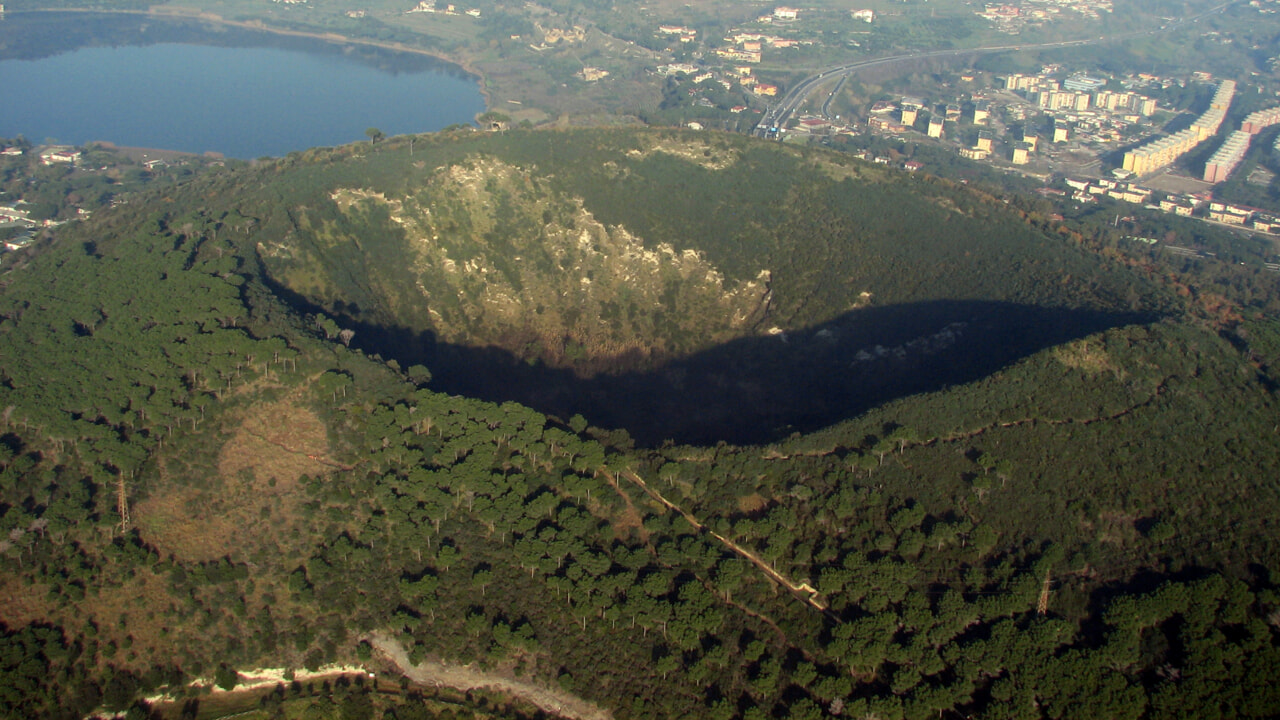
“We don’t know when or if these long-term disturbances will lead to an eruption, but Campi Flegrei is following a trend we’ve seen when testing our model on other volcanoes, including Rabaul in Papua New Guinea, El Hierro in the Canary Islands and Soufriere Hills on Montserrat in the Caribbean. We’re getting closer to predicting eruptions at volcanoes that have been silent for generations using detailed physics models to understand how previous disturbances develop,” added the English scientist.
To make matters worse, not far from Campi Flegrei, radioactive pollution of the waters of the Garigliano River was found.
In short, an apocalyptic nightmare for Southern Italy that well represents the mythological vision of the door to hell…
The Ghostly History of Lake Avernus
All these dangers appear tenfold if we analyze the history of the Phlegraean Fields not only from a scientific point of view but also from a historical, mythological and supernatural one due to the presence of Lake Avernus.
It is a volcanic water basin located in the municipality of Pozzuoli, precisely between the hamlet of Lucrino and the archaeological site of Cuma, in the metropolitan city of Naples.
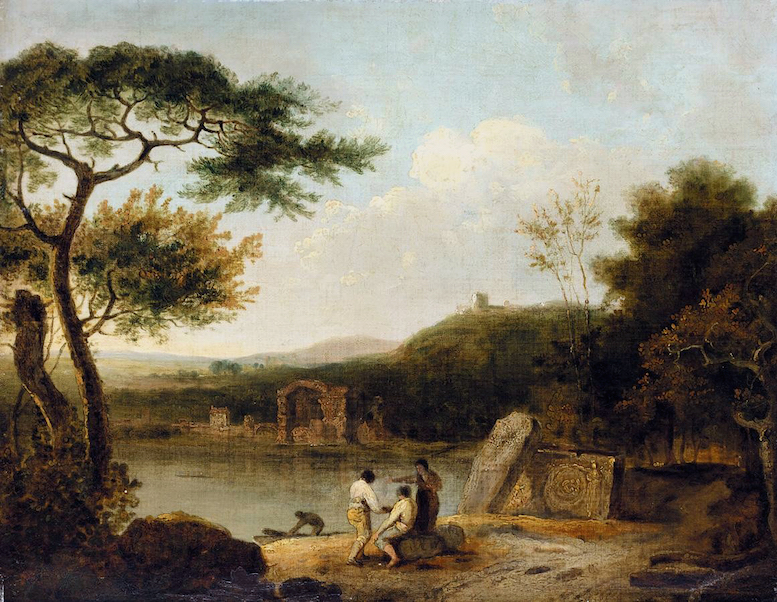
The name Avernus derives from the Greek ἄορνος (without birds), in fact it is said that this absence was due to the fact that the waters of the lake exhaled particular gases that did not allow life to birds. It rises inside an extinct volcanic crater, formed 4,000 years ago, and is the second largest, after Lake Fusaro, among all the lakes present in the Phlegraean Fields.
The Solfatara of Pozzuoli in the Phlegraean Fields in Compania
According to Greek and Roman religions and mythology, it is an access to the Underworld (kingdom of the god Pluto) and the earthly home of the fallen angel Lucifer, therefore the Roman underworld (the Greek Hades) is also called Avernus, furthermore the trees located around the shore of the lake represent the famous dark forest mentioned in Dante’s Inferno.

A clear testimony of all this was given to us by the Latin poet Virgil, in the sixth book of the Aeneid: Aeneas consults the Cumaean Sibyl, located in a cave near the Temple of Apollo of Cuma, begging her to guide him to the Underworld, whose door would be precisely Lake Avernus (scrupea, tutta lacu nigro nemorumque tenebris VI, 238).
The painting Aeneas descends into Avernus by Niccolò dell’Abate (1543) and a diagram of Virgil’s Underworld according to the Aeneid
During the 19th century it was the subject of study for many natural phenomena, in particular for the optical phenomenon of the Fata Morgana.
Similarly, from the 19th century onwards the thought spread among men according to which the Fata Morgana, a Celtic mythological figure linked to the Arthurian cycle, had chosen this very place as her home, in particular she would reside inside imaginary castles floating on the water that would appear precisely because of the relative optical phenomenon.
In an era in which the Christian values of the Italian homeland have been sacrificed by the various governments that have taken turns in Rome on the pagan altar of the Weapons Lobby in Ukraine and of Big Pharma throughout the European Union, the forceful awakening of nature right where the lair of darkness is said to be nesting should also be read as an apocalyptic nightmare.
Fabio Giuseppe Carlo Carisio
director of Gospa News
investigative journalist since 1991
© COPYRIGHT GOSPA NEWS
reproduction prohibited without authorization
follow Fabio G.C. Carisio on Twitter
and Gospa News on Telegram
MAIN SOURCE
GOSPA NEWS – CAMPI FLEGREI DOSSIER
RELATED TOPICS
ZELENSKY Incessant Asking US NUKES! Pentagon Refuses to rule out Nuclear Weapons for Ukraine



